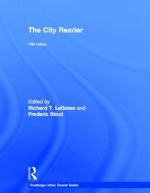
|
| Name: _________________________ | Period: ___________________ |
This test consists of 15 multiple choice questions and 5 short answer questions.
Multiple Choice Questions
1. Urban economists tend to study the economics of cities using what kind of methods, according to LeGate in "How to Study Cities"?
(a) Quantitative.
(b) Industrial.
(c) Qualitative.
(d) Political.
2. When did Friedrich Engels produce The Communist Manifesto with Karl Marx?
(a) 1848.
(b) 1851.
(c) 1850.
(d) 1849.
3. Who was the author of "The Polis"?
(a) Henri Pirenne.
(b) Ibn Battuta.
(c) Marco Polo.
(d) H.D.F. Kitto.
4. What periodical first published "The Urban Revolution"?
(a) Town Planning Review.
(b) The Wall Street Journal.
(c) The New York Times.
(d) Forbes.
5. Who wrote the article "The Urbanization of the Human Population"?
(a) Kevin Lynch.
(b) Kingsley Davis.
(c) William Julius Wilson.
(d) Raymond Mohl.
6. Who was the author of the essay "The Growth of the City: An Introduction to a Research Project"?
(a) Jane Jacobs.
(b) Kenneth T. Jackson.
(c) W.E.B. Dubois.
(d) Ernest W. Burgess.
7. What kind of computer software permits users to map data and is useful in studying cities?
(a) NHL.
(b) CIA.
(c) GIS.
(d) KGB.
8. What urban sociologist did extensive field research in Black ghettos of Chicago?
(a) John Reps.
(b) Kevin Lynch.
(c) William Julius Wilson.
(d) Lewis Mumford.
9. What refers to reference points that have a clear form, contrast with their background, and have prominent locations in "The City Image and Its Elements"?
(a) Landmarks.
(b) Boundaries.
(c) Monuments.
(d) Statues.
10. The editors write in the Introduction from the Editors that their students have asked for the past how many years what the best writings in urban development are?
(a) 42.
(b) 28.
(c) 37.
(d) 35.
11. When was "The Great Towns" first published?
(a) 1835.
(b) 1856.
(c) 1844.
(d) 1845.
12. Who does LeGate write developed a "broken window" theory and community policing ideas in "How to Study Cities"?
(a) George L. Kelling and William Julius Wilson.
(b) James Q. Wilson and George L. Kelling.
(c) Michael Porter and William Julius Wilson.
(d) Michael Porter and James Q. Wilson.
13. V. Gordon Childe writes in "The Urban Revolution" that the three revolutions separating the major eras are the urban, the industrial and what?
(a) Philosophical.
(b) Paleolithic.
(c) Artistic.
(d) Neolithic.
14. LeGates writes in "How to Study Cities" that there are "social, spacial and _____ aspects to urban poverty as well as economic ones."
(a) Political.
(b) Industrial.
(c) Random.
(d) Hereditary.
15. In the Prologue, "How to Study Cities," LeGates writes that how many selections are included in The City Reader?
(a) 59.
(b) 56.
(c) 53.
(d) 52.
Short Answer Questions
1. What conquistador wrote an eyewitness account of the conquest of Mexico by the Spaniards under Hernán Cortés?
2. What author excerpted in The City Reader is recognized as an expert in the social science discipline of history, according to "How to Study Cities"?
3. Richard LeGates writes in "How to Study Cities" that professors are trained in and expected to teach material within their respective what?
4. In "How to Study Cities," LeGates writes that the borderlines between the objects of study, methods, theory and work product of different disciplines are what?
5. When was "The Uses of Sidewalks: Safety" first published?
|
This section contains 476 words (approx. 2 pages at 300 words per page) |

|




